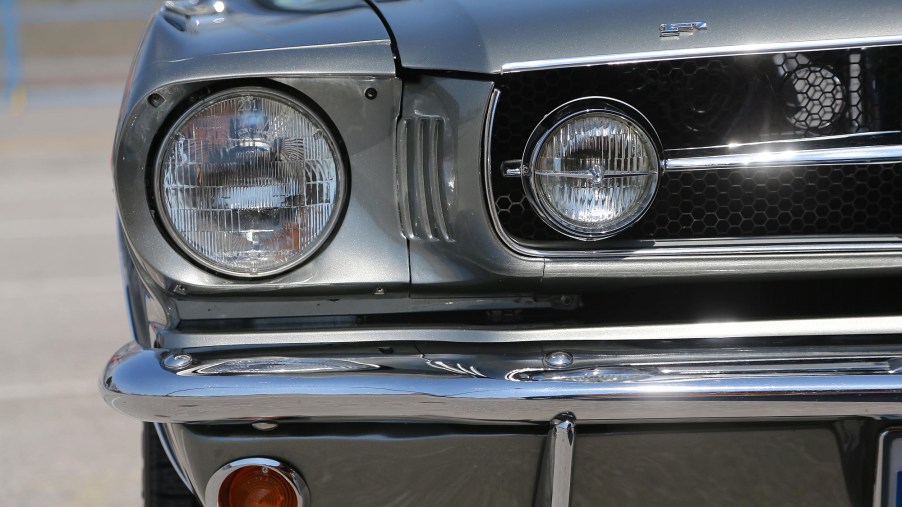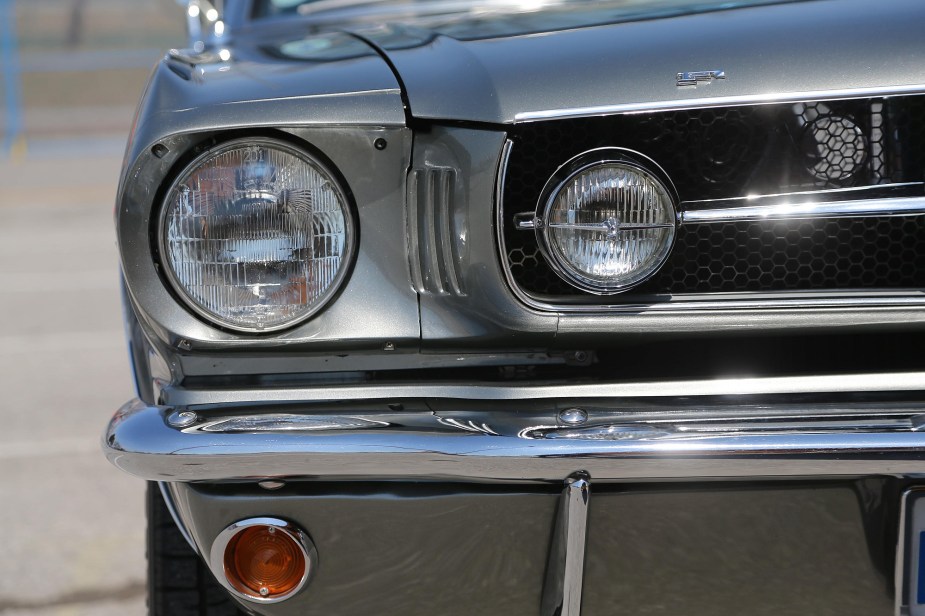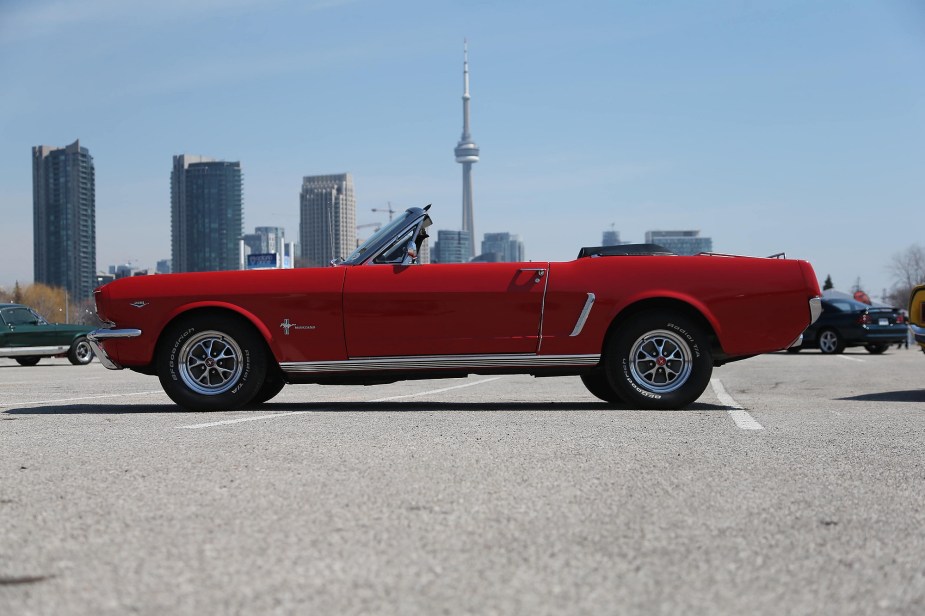
Can You Daily Drive a Classic Mustang?
OK, so you’re a car shopper considering buying an interesting daily driver. However, your neighbor is selling a tantalizing 1965 Ford Mustang coupe, and you think, “I could daily drive that.” Well, you should consider a few things before you try to commute in a classic. So, if you can daily drive a classic Mustang, should you or should you buy something newer?
How much do classic Mustangs cost?
Classic Ford Mustangs are still relatively affordable compared to other pony cars and muscle cars of the day. For instance, you can buy an inline-six-cylinder or 289-cubic inch V8-equipped coupe for around $30,000, depending on the condition. Of course, an example needing body work, mechanical work, or both could cost you considerably less. However, you’ll have to have some mechanical competency to restore, restomod, or at least maintain a classic pony car.

A fastback, however, will cost you more than a coupe. Those cars are typically rarer and more sought after than the coupes and convertibles from the first few model years. For instance, Hagerty puts the value of a 1965 Ford Mustang GT Fastback in good condition at about $52,000. Fastbacks, and special edition Mustangs like the Boss 429 and original Shelby GT350, are much too valuable for a daily driver application compared to a solid 1965 or similar coupe.
How reliable are classic Mustangs?
A classic Ford Mustang is a reliable car considering it’s nearly 60 years old. Many of the vehicles came standard with a 200-cubic inch inline-six-cylinder or 289-cubic inch V8 engine. Those engines are relatively straightforward, and the cars offer lots of engine bay space to work on carburetor adjustments, oil changes, and more. Better yet, there’s no shortage of possibilities to upgrade from manifolds to headers, power steering, power brakes, add fuel injection, or more.

Of course, if you want the most reliable car possible, you should commission a professional pre-purchase inspection (PPI) on a well-maintained example. Furthermore, restomods can add modern convenience and reliability to a classic car, like fans who swap modern, fuel-injected powerplants into their first-generation Mustangs.
Should you daily drive a classic Ford Mustang?
You should mentally prepare yourself for daily driving a classic car, whether a Ford Mustang or otherwise. First, a classic Mustang might be a learning experience for buyers who aren’t used to hands-on maintenance. Next, unless your classic car has a much higher performance setup than stock, like a fuel-injected 302-cubic inch engine build or modern engine swap, don’t expect to keep up with today’s traffic seamlessly; the right lane is your friend now.
Finally, insuring your classic car for daily driving is difficult. Many insurance carriers won’t guarantee a classic car for its collectible value; instead, they’ll offer a low payout value on a conventional insurance policy. You could opt for classic car insurance, but those policies typically restrict mileage, destinations, and use.

Should you buy a newer car instead of daily driving a classic Mustang?
If your mind is made up on a classic like a 1965 Ford Mustang for a commuter car, buy it. These cars are easy to work on, joyful time capsules. However, you’ll have to make compromises, maintain patience, and be prepared to work on it. If that scares you, you might want to consider a newer car, like an S197 Mustang or Dodge Challenger.
Scroll down to the following article to read more about Mustangs and other muscle cars!



